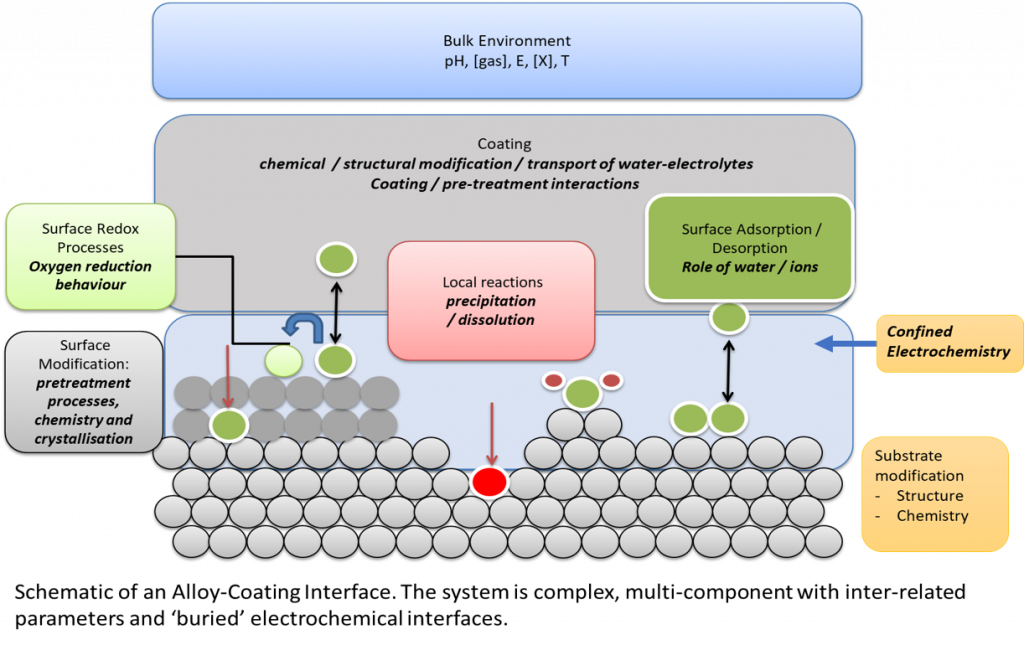Operando spectro-microscopic studies of interfaces in coated systems
| Supervisor | Professor Mary Ryan |
| University | Imperial College London |
| Industry Co-Sponsor | BASF |
| Project Description | Coating systems are complex multi-component and dynamic, and are critical to operational lifetime and safety of engineering materials. They typically fail due to delamination caused by electrochemical reactions at the alloy-coating interface. There is a lack of fundamental understanding of these processes due to the difficulty in measuring ‘buried interfaces’ coupled with challenges of assessing dynamic information at the appropriate lengthscale. Some of the inter-related parameters are shown schematically in the diagram below. In this project we will probe chemical and structural changes underneath coatings, at electrochemical interfaces. The work will involve design of model systems that are representative of real-world scenarios, as well as correlative measurements on samples provided by our industrial collaborators. In particular we will focus on: a) Surface pre-treatment processes and interactions between thin film treatment and coating. Using operando XAS to determine deposition kinetics, and TXM to map local chemistry, and chemistry evolution during processing. Detailed surface characterisation pre- and post- treatment will be used to determine the chemistry and structure ‘presented’ to the coating. b) Determination of chemical gradients across interfaces (substrate – thin film – coating). In particular the distribution of water and organic functional groups will be determined using cryo-TEM and APT. This work will inform key questions around the interfacial bonding and the role of boundary layer water in the induction period of system degradation. a) The knowledge obtained will help develop a holistic understanding the properties between substrate and coating, and ultimately degradation processes – feeding into both predictive models and design for new systems |
| Key Techniques | We will use operando and cryo nanoscale approaches to study the dynamics (in real time or by freezing the system at various stages). These techniques have never been applied to this system before and so an element of development for cells, sample geometry and analysis is required. The techniques will provide high resolution (up to atomic scale) of complex electrochemical interfaces – enabling visualization of ion distribution and reaction pathways. Operando and cryo techniques (cryo)Transmission Electron Microscopy, (cryo)Atom Probe Tomography (SEM, TEM, APT); In situ X-ray Absorption Spectroscopy and Transmission X-ray Microscopy (XAS, TXM) Ex situ correlative techniques: Environmental SEM, XPS/SIMS |

For information on how to apply for this project please visit cdt-acm.org/phd-opportunities
Daphné Lubert PerquelThe CDT provided me with the tools to develop my career as a researcher and to participate in Outreach activities to broaden my skills. I really enjoyed my time as a student in the CDT and look forward to continuing collaborations with the research groups there.
![CDT Advanced Materials Characterisation [logo]](https://www.cdt-acm.org/wp-content/themes/cdt-acm-theme/assets/img/cdt-acm-logo-white.svg)